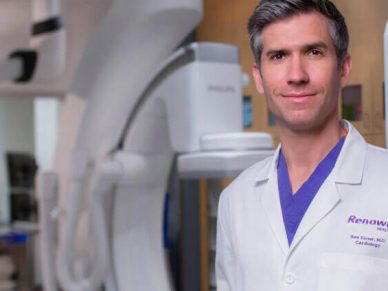For Baby Boomers, end-of-life care will be a top priority

The oldest Baby Boomers will turn 80 soon, and tens of millions are setting their sights on retirement and planning out their remaining time. They’re the largest generation so far in American history to reach this stage of life, and they would love to live out the rest of it in comfort and dignity. Millions every year will be looking for quality end-of-life care. There are already about 15 million people in the country receiving long-term care, and close to 2 million in hospice care. Most people who pass age 65 will need long-term care, and about a quarter of them will need significant amounts of it—planning for all that is a massive task for Baby Boomers, their families, and the healthcare industry.
End-of-life care costs

By 2050, the number of Americans receiving long-term care is set to double, the U.S. Centers for Medicare and Medicaid Services estimate. Costs for end-of-life care can be high. Assisted living facilities and home health aides can cost around $50,000 annually, with private rooms in nursing homes topping out around twice that.
Medicare will pay for only a fraction of those costs, and Medicaid doesn’t kick in until people have run out of other resources. Even private insurance might be of little help, as many insurers have dropped such coverage options or made premiums prohibitively expensive as they calculated the risks of so many people aging at one time.
“According to the National Institute of Health, 5% of the most seriously ill Americans account for more than 50% of healthcare spending, with most costs incurred in the last year of life in hospital settings,” the New York Times reported.
Longer life spans made possible by improvements in medical care and nutrition can prove to have their downsides as people live longer, but with chronic illnesses including mental disorders that diminish quality of life.
“Most long-term care needs arise when people are in their mid-to late-80s,” Gal Wettstein of the Center for Retirement Research at Boston College told CNBC. “We’re not there yet with the boomers, but that is the big concern.”
There will be lots of them to care for, with more than 60 million boomers estimated to be alive in 2030, all over 65.
Inheritance? Not So Fast

The $75 trillion in assets that the families of Baby Boomers might stand to inherit in “The Great Wealth Transfer” could dwindle considerably before it gets to the heirs. Without insurance or Medicare covering most bills, a considerable amount of that money might go toward end-of-life care.
“The reality is that care costs of $100,000 per year for any length of time will blow up almost any retirement plan,” David Yeske, founder and managing director of San Francisco-based financial advisory firm Yeske Buie, told CNBC.
Far too often, heads of families don’t make a concrete plan for what their progeny will inherit. They simply leave them whatever is left. Because of cultural taboos about discussing money, there’s often a gap in perception of how much that will be. Aging parents don’t communicate clearly with their heirs about inheritance plans, leaving the kids to make assumptions. Frequently, they wildly overestimate how much they stand to inherit, getting a nasty surprise when the will is read.
“Most wealth creators are primarily focused on their own financial security, so the concept of inheritance planning naturally becomes a much lower priority,” Joseph Smith, a wealth management advisor with Northwestern Mutual, told Business Insider. “They’ll often say: ‘My kids can have whatever is left over, but I’m not living my life in such a way as to try and preserve resources for them!'”
Cottage Industry

With the writing on the wall, new services around end-of-life care have been popping up. There are end-of-life planners like those offered by Compassion & Choices and Everence. Doulas are more commonly known for ushering babies into life, but some focus on end-of-life care. There’s even an International End of Life Doula Association that offers certification training. Universities across the country offer certificates in end-of-life and palliative care.
With about 10,000 boomers turning 65 every day in the U.S., there is going to be a great need for end-of-life care professionals in the coming decades. The need won’t subside, as large generations come of old age behind them. They’ll be looking for specialized services and in need of years of care as people continue living longer.
“Older adults want to remain as independent as possible. Planning ahead and doing the homework is important because some decisions should not be left to chance or a crisis,” Semanthie Brooks of the Benjamin Rose Institute on Aging said. “To age successfully means that not only do you understand the aging process, but you know where to get help when it is needed. To grow older in life with dignity is a gift that we all should share.”
The services they need will have to come from somewhere, and end-of-life care will shape how we spend our final years.
















Leave a Reply